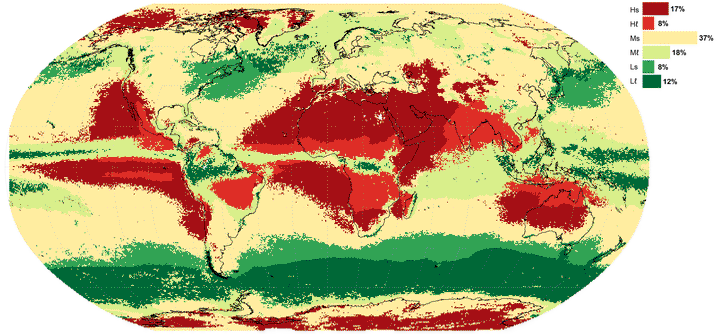Meteorological drought lacunarity around the world and its classification

Resumen
Drought duration strongly depends on the definition thereof. In meteorology, dryness is habitually measured by means of fixed thresholds (e.g. 0.1 or 1 mm usually define dry spells) or climatic mean values (as is the case of the Standard-ised Precipitation Index), but this also depends on the aggregation time interval considered. However, robust measurements of drought duration are required for analysing the statistical significance of possible changes. Herein we have climatically classified the drought duration around the world according to their similarity to the voids of the Cantor set. Dryness time structure 5 can be concisely measured by the n-index (from the regular/irregular alternation of dry/wet spells), which is closely related to the Gini index and to a Cantor-based exponent. This enables the worlds climates to be classified into six large types based upon a new measure of drought duration. We performed the dry-spell analysis using the full global gridded daily Multi-Source Weighted-Ensemble Precipitation (MSWEP) dataset. The MSWEP combines gauge-, satellite-, and reanalysis-based data to provide reliable precipitation estimates. The study period comprises the years 1979-2016 (total of 45165 days), and a spatial 10 resolution of 0.5º, with a total of 259,197 grid points. Data set is publicly available at 10.5281/zenodo.3247041 (Monjo et al., 2019).